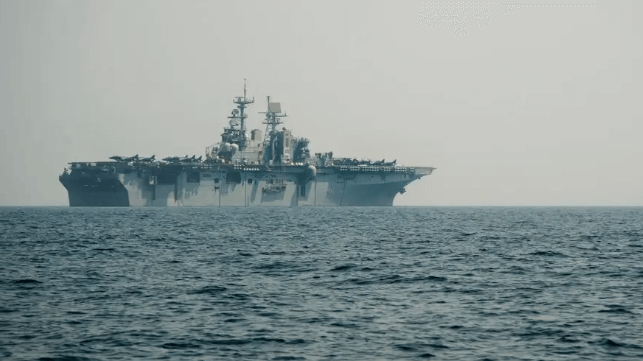Posted on November 6, 2022 at 8:15 p.m. by
The Maritime Executive
The US Naval Sea Systems Command installed a metal 3D printer for stainless steel parts aboard the amphibious USS Bataan, expanding on previous trials with onboard 3D printing of plastic and aluminum materials.
Bataan’s onboard printer is a Haas TM-1 CNC mill – an affordable tool shop model – with a Meltio 3D laser wire printhead. With the print head integrated into a CNC milling machine, the combined system can print a metal part and then machine it to final tolerances, all in the same cabinet. Meltio’s system is capable of working on titanium, carbon steel, mild steel and nickel, but for testing the system will work on 316L stainless steel, a common edge material. with excellent corrosion resistance.
The TM-1 is a large cube weighing two tons, making it a difficult fit for smaller vessels, but the ample space and weight allowances found on an amphib or carrier are sufficient. NAVSEA’s additive manufacturing program manager, Jim Pluta, told Seapower that in the future, a metal 3D printer aboard a large ship – like the one aboard Bataan – could meet the repair needs of ships. a full task force, such as an amphibious ready group or an aircraft carrier strike group. This would extend 3D printing capability to a large part of the fleet, without putting a printer on every ship.
On board Bataan, the CNC 3D printer will be used to manufacture spare parts for equipment, including obsolete components – a realistic possibility, since the ship was commissioned in 1997. This opens up the possibility of repairing systems that would otherwise have to be completely replaced, without waiting for a return to dock to do so.
“These printers have the ability to help the Navy overcome both ship and system obsolescence issues that have a lifespan measured in decades and contribute directly to improving the operational readiness of our systems and ships,” said Jason Lloyd, NAVSEA’s chief engineer.
The team also installed a second 3D printer on board Bataan to print plastic parts. The department has developed digital instructions for printing more than 300 plastic objects that could be useful on board, and is adding to its library.
NAVSEA’s additive manufacturing division has been working for years on the wider adoption of 3D printing. It introduced its first 3D-printed metal parts for an aircraft carrier in 2018, making the technology accepted in a jobsite application. NAVSEA continues to work on evaluating 3D printing in a shipboard environment, which has its own unique requirements due to ship motion. The first aluminum metal 3D printer on a ship was mounted aboard the USS Essex earlier this year (sponsored by the Naval Postgraduate School).

